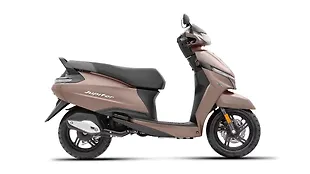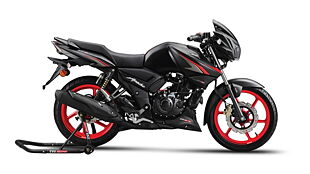Introduction

We have put in 5000km on the Apollo Alpha H1 in the last three months that we have been running them. For the uninformed, the Alpha H1 is Apollo’s top-spec sports bike tyre meant for the likes of the BMW G 310 R, the KTM 390 Duke, the Yamaha R3, the Ninja 300 and the Apache RR 310. These are ‘W’ rated, zero degree steel belt radials that promise both grip and mileage. For more detailed information on the new tyres, head to our reports HERE and HERE.
This report, meanwhile, is all about how the Alpha H1s performed in our tests. We ran the tyres through four tests – braking, fuel efficiency, cornering grip, and tread wear. And this is how they fared…
Braking distances

Apollo doesn’t say so, but after having looked at the construction of the tyre, and the company’s claim about grip and longevity, it’s clear the Alpha H1 either uses a dual compound tyre or two very distinct constructions for its central and side treads. No wonder we walked away with such results.
Under braking, the Alpha H1s recorded a longer stopping distance compared to the RR’s stock tyres. With only the rear brake applied, the Apollos took 17.1 metres to come to a complete stop from 40kmph. With just the front, the stopping distance reduced to 9.2m. And, with both front and rear, the Apollo shod Apache only took 6.9m.
With the stock tyres, the Apache had come to a stop in 15.9m, 7.4m and 6.6m, respectively. The longer stopping distances with the Alpha are a reflection of the hard-wearing characteristic of its central tread.
Fuel efficiency
As we had measured and reported in our second report, the Apollos are heavier than the RR’s stock tyres. The front weighs 300gms more while the rear is heavier by 500gms. This difference in weight also resulted in a slight drop in fuel efficiency. With the stock tyres, the Apache returned 30.1kmpl. With the Apollos, the figure dropped to 28.6kmpl. That’s a drop of less than five per cent.
Tread wear

When new, the Apollos’ central tread depth measured 3.45mm and 6.20mm front and rear, respectively. After 5000km riding in the city and highway; over good roads and no roads; and with some unnecessary rear end slides on gravel and dirt, the tread depth has reduced to 3.31mm and 4.88mm front and rear.
Again, the lack of any serious wear – we are talking soft compound ‘W’ rated tyres here – tells us that the Apollo has either used a different compound or a different construction for its central tread. Now, a good time to change tyres would be with about 1mm of tread depth still left. That effectively means, considering the same rate of wear, the Alpha H1’s should last for over 19,000km. And that’s just for the rear. The ones at the front though would go on and on and on…
Cornering grip

The difference in compound or construction not only results in slightly heavier steering with the Alpha H1s, it also results in a perceptible ‘step’ when leaning. One can tell when the tyres are moving from their durable section to the grippier part.
Once on the gripper section though, the Alphas hook in beautifully. The lean, then on, is more effortless and seamless, and there’s good feedback from the tyres as well. But yes, every time there is a quick direction change involved, one does need to put in more steering muscle to get the Apollos to work quickly.
The grip in the wet is equally impressive. We didn’t lean it all the way on wet switchbacks, but there was grip in reserve if we needed to lean the bike further in a corner. Even when going over gravel, the tyres barely moved around. Having said that, in the dry, the Apollos do seem to go mute towards the very end of their lean. The grip is still there, but the communication is a tad poor. So, it’s more down to trusting the tyres than feeling them.
And, lest we forget, even after so many kilometres on various road surfaces, the Alpha H1s haven’t shown any signs of cuts or bruises; unlike most soft compound tyres.
To buy or not to buy

That’s a definite buy.
Sure, the Apollo Alpha H1s aren’t cheap. These are priced almost similar to the ‘W’ rated Metzelers. And, these are also the more popular choice among cornering enthusiasts. Now, as far as Metzelers and Apollos go, the former certainly lend more feel at the limit, and would as a result, instill more confidence when riding hard. But, the Metzelers don’t last. In most cases getting even 10,000km from a set can be a stretch.
And that’s why the Apollo Alpha H1 makes sense particularly for those who use their motorcycle for daily commutes and only indulge in cornering antics over the weekends – or possibly once a month (read, me). Not only are the Apollos way more durable, these work superbly in the wet too. Moreover, these are quite up to the task of hard cornering. Only difference is, you’d have to trust them over the feel they lend on the limit, which, by the way, hasn’t been an issue for us so far.
Photography by Kaustubh Gandhi
Gallery
1/5
TVS Apache RR310 Action
Double Tap to Zoom






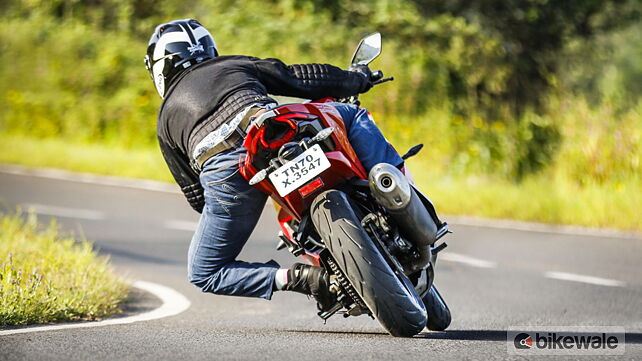




![TVS Apache RR 310 [2020-2023] Image TVS Apache RR 310 [2020-2023] Image](https://imgd.aeplcdn.com/272x153/n/cw/ec/102869/apache-rr-310-right-side-view-2.png?isig=0&q=80)
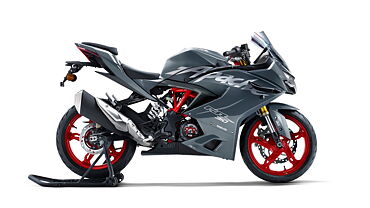

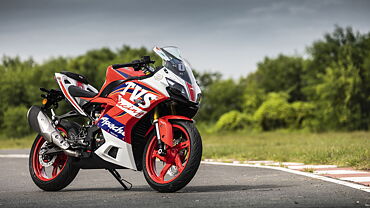
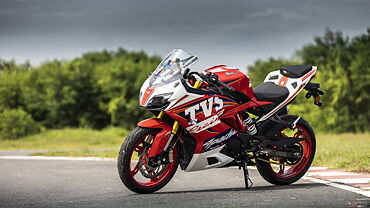
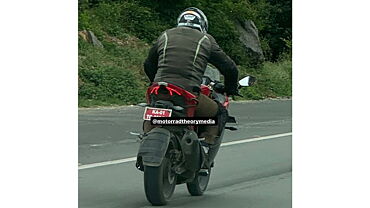
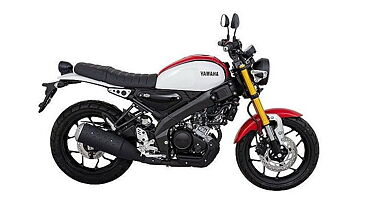

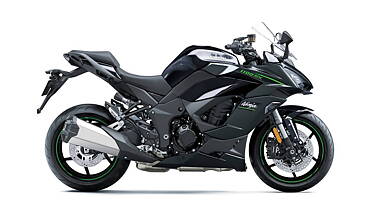

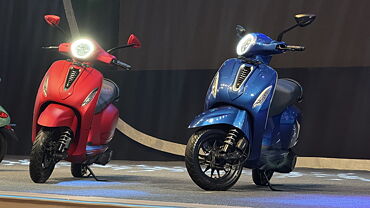

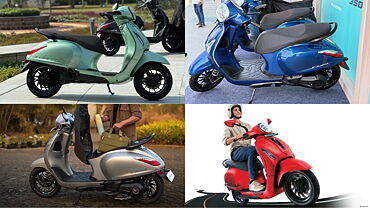
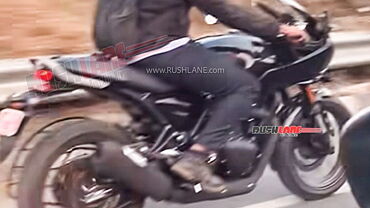

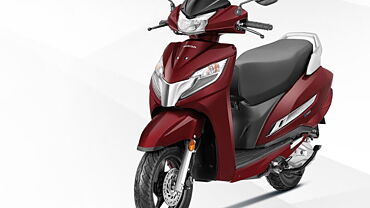
![TVS Apache RR 310 [2020-2023] Exterior TVS Apache RR 310 [2020-2023] Exterior](https://imgd.aeplcdn.com/199x112/bw/ec/32961/TVS-Apache-RR-310-First-Ride-Review-118203.jpg?wm=2&q=80)
![TVS Apache RR 310 [2020-2023] Exterior TVS Apache RR 310 [2020-2023] Exterior](https://imgd.aeplcdn.com/199x112/bw/ec/34092/TVS-Apache-RR310-Long-Term-Report-3-125636.jpg?wm=2&q=80)
![TVS Apache RR 310 [2020-2023] Exterior TVS Apache RR 310 [2020-2023] Exterior](https://imgd.aeplcdn.com/199x112/bw/ec/36641/2018-Sherco-TVS-Rally-Lite-450-First-Ride-Review-138277.jpg?wm=2&q=80)
![TVS Apache RR 310 [2020-2023] Action TVS Apache RR 310 [2020-2023] Action](https://imgd.aeplcdn.com/199x112/bw/ec/32161/TVS-Apache-RR-310-Action-114115.jpg?wm=2&q=80)
![TVS Apache RR 310 [2020-2023] Action TVS Apache RR 310 [2020-2023] Action](https://imgd.aeplcdn.com/468x263/bw/ec/32995/TVS-Apache-RR310-Action-118575.jpg?wm=2&q=80)

